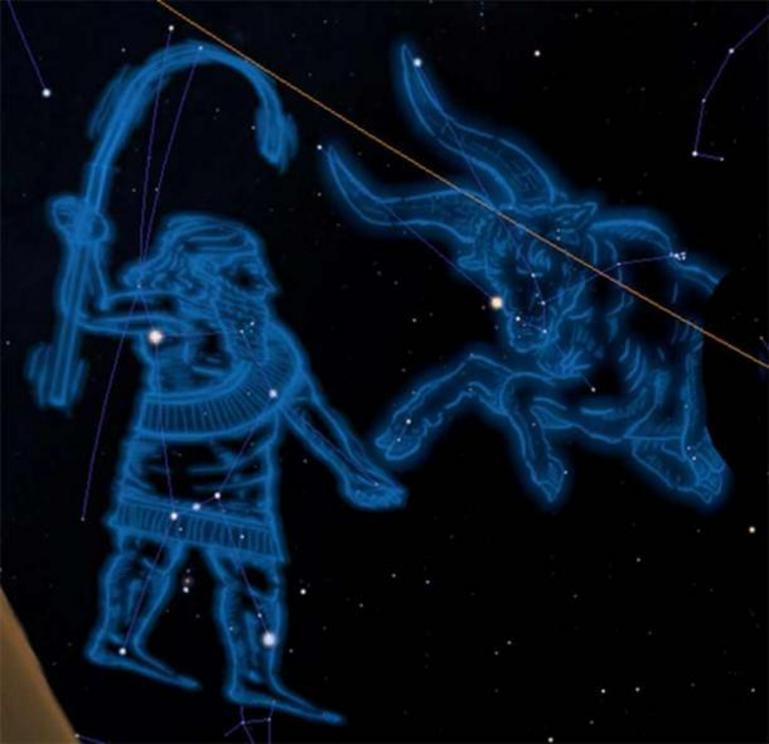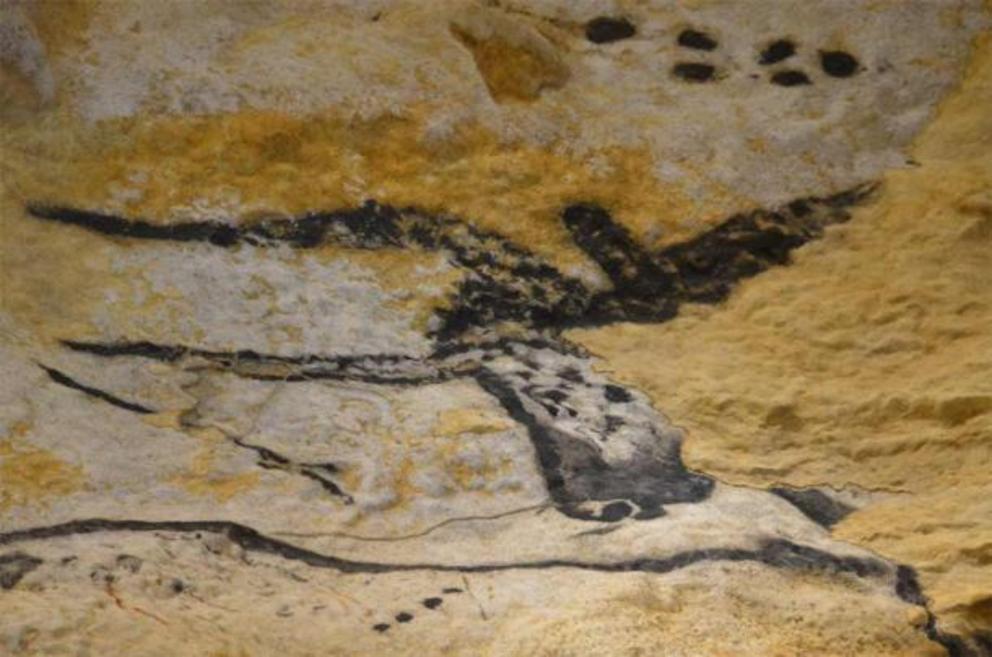Ancient transmissions of the history of the constellations
Top Image : Arabic astronomical chart
How old are the constellations? How were they transmitted through human history? Quite early during humanity’s long journey on earth, many of the brighter stars were named and then arranged into small groupings, asterisms or constellations. Different early cultures combined various star assemblages; many were brought together to form constellations. Stories were added to memorialize them. Since the constellations accumulated and developed over a prolonged period of time, an exact time period will never be known.
 In the Mesopotamian pre-zodiac, Orion had been included. His shepherd's tool touches the ecliptic; Taurus might have been complete before his fight with Gilgamesh (Orion); Drawings of the constellation "True Shepherd of Anu" (Orion) and the complete Bull
In the Mesopotamian pre-zodiac, Orion had been included. His shepherd's tool touches the ecliptic; Taurus might have been complete before his fight with Gilgamesh (Orion); Drawings of the constellation "True Shepherd of Anu" (Orion) and the complete Bull
The long-accepted 48 constellations of the Northern Hemisphere that are most familiar today were previously thought to be organized, named, and codified into numerous myths by the early Greeks, many inherited from the Babylonians. But the true story of the constellations is much more complicated. As ancient societal groups migrated and traded over an extended geographical area, the stars, and the names and stories attached to them, were passed down from a broad base of multiple backgrounds. Scholars argue that by the third millennium BC, the names of a few zodiacal constellations, such as the Bull, the Lion and the Scorpion, were recorded in Sumerian texts. But historians of astronomy now propose that many of these constellations’ names date back to much, much earlier times.
 Lascaux bull – do the dots above the bull represent the Pleiades?
Lascaux bull – do the dots above the bull represent the Pleiades?
Ancient Records Of Constellations
Some researchers have identified specific notations on cave walls as the bright star formations of the constellations, such as the Pleiades, the Hyades, Corona, and Taurus. In particular, one of the painted bulls within the Hall of Bulls at Lascaux Cave (c.17,000 BC) is marked with seven dots in the same formation as the stars of the Pleiades; they appear in the correct relationship to Taurus. These debatable star markings on cave walls reach as far back as the Upper Paleolithic era, 35,000 BC.
 Star list with distance information, Uruk (Iraq), 320-150 BC, the list gives each constellation, the number of stars and the distance information to the next constellation in ells
Star list with distance information, Uruk (Iraq), 320-150 BC, the list gives each constellation, the number of stars and the distance information to the next constellation in ells
The earliest verifiable Babylonian catalogues of stars and constellations, written on clay tablets, date to the start of the Middle Bronze Age (2200-1550 BC), notably the Three Stars Each text and the more extensive MULAPIN.

